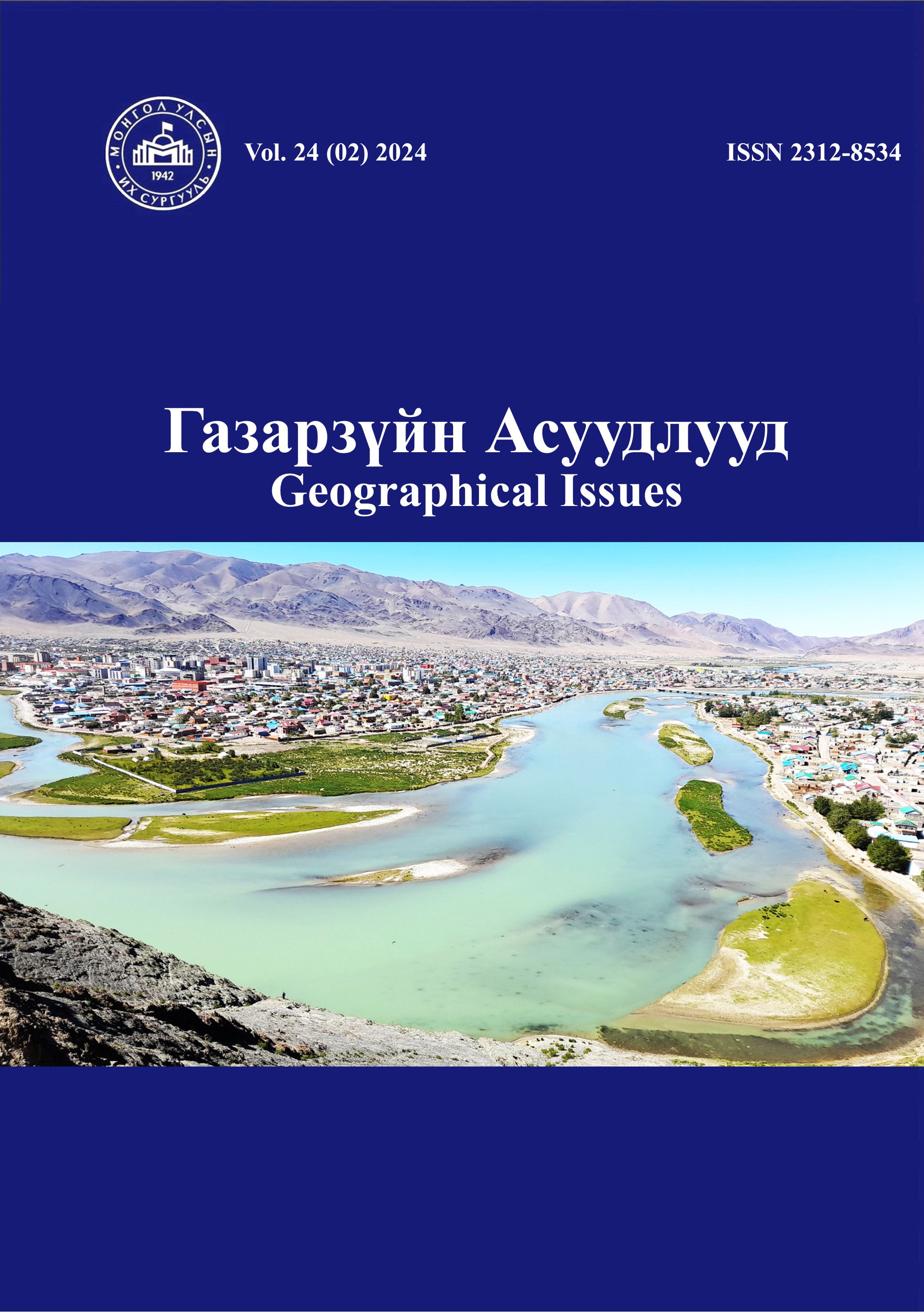Methodology for determining the Spatial Distribution and Detection of Brandt's Vole Burrow Systems Utilizing Faster R-CNN model
“Faster R-CNN” загвараар үлийн цагаан оготны нүх илрүүлэх, орон зайн тархалтыг тодорхойлох аргазүй
Keywords:
Object detection, Faster R-CNN, Brandt's vole, GF-2, Hulunbuir steppeAbstract
Most small rodent populations around the world exhibit fascinating population dynamics, capturing the attention of numerous scholars due to their multi-year cyclic fluctuations in population size and astonishing amplitude of these fluctuations. Hulunbuir steppe stands as a crucial global hub for livestock production, yet in recent decades, the area has faced recurring challenges from steppes rodent invasions, with Brandt's vole (Lasiopodomys brandtii, BV) being particularly rampant among them. They exhibit seasonal reproduction and strong social behavior, and are generally considered pests, especially during population outbreak years. Prior studies suggest that BV population outbreaks tend to happen across a wider geographic area, and a strong indicator for identifying rodent outbreaks is recognizing their burrow clusters (burrow systems). Hence, this paper conducts target object detection of BV burrow clusters in the typical steppes of Hulunbuir using two GF-2 satellite images (covering an area exceeding 1000 km²). from 2021 (the year of the BV outbreak). This task is accomplished by incorporating the Faster R-CNN model in combination with three detection approaches: object-based image classification (OBIC), based on vegetation indices classification (BVIC), and based on texture classification (BTC). The results indicate that OBIC demonstrated the highest robustness in BV burrow clusters detection, achieving an average AP of 63.80% and an F1 score of 0.722 across the two images. BTC exhibited the second-highest level of accuracy, achieving an average AP of 55.95% and an F1 score of 0.6660. In contrast, BVIC achieved the lowest level of accuracy among the three methods, with an average AP of merely 29.45% and an F1 score of 0.4370. Overall, this study demonstrates the crucial role of utilizing high-resolution satellite imagery combined with DL-based object detection techniques in effectively monitoring and managing the potential outbreaks of steppe rodent pests across larger spatial extents.
Downloads
Downloads
Published
How to Cite
Issue
Section
License

This work is licensed under a Creative Commons Attribution-NonCommercial-ShareAlike 4.0 International License.






